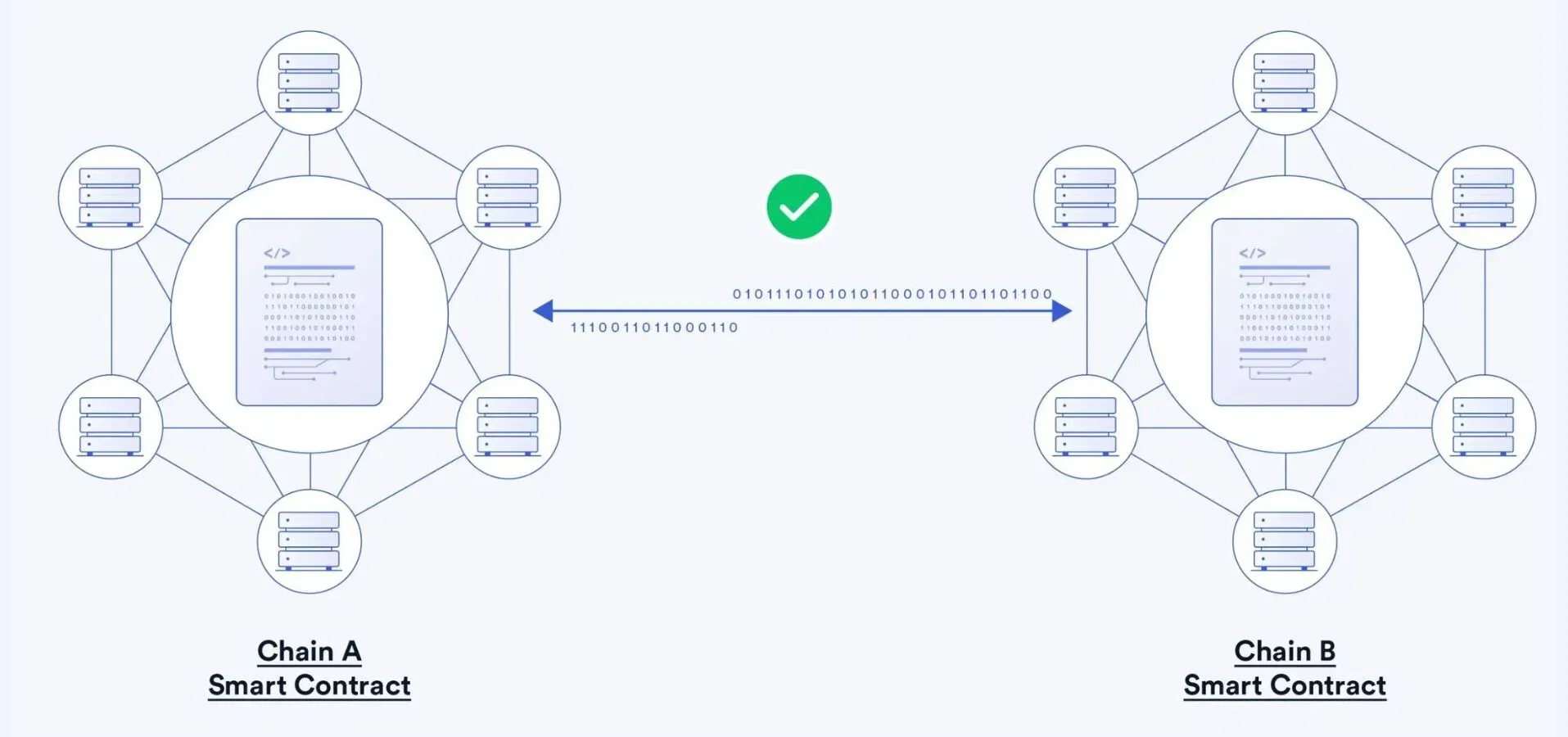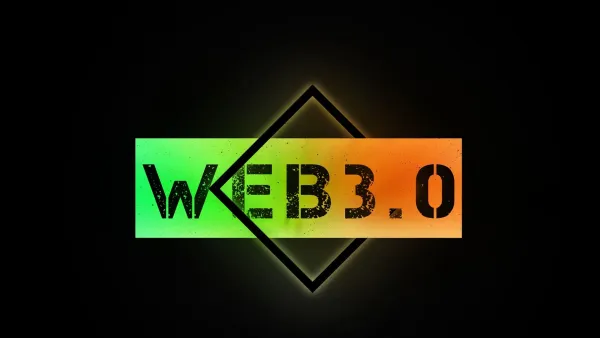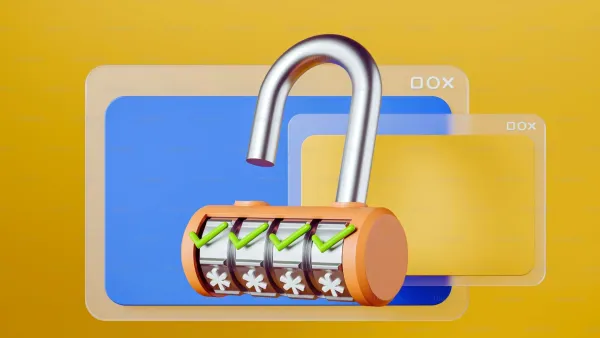Blockchain technology has transformed how we experience and manage digital assets and transactions. With the emergence of Web3 and decentralized apps, we have entered a new era in which several blockchain networks coexist and power various functions. The problem is in making these networks seamlessly communicate with one another.
The current state of Web3 is fragmented consisting of segmented blockchains. Blockchain interoperability bridges these segments to bring about communication and stimulate seamless interaction among various blockchain networks.
What Does Interoperability In Blockchain Mean?
The capacity of multiple blockchain networks to collaborate is referred to as blockchain interoperability. It enables separate blockchains to connect, share data, and conduct transactions. Interoperability enables cross-chain capability, allowing assets and data to move freely across multiple blockchain systems.

Web3, or the decentralized web, is based on the concept of linked ecosystems in which different dApps and services communicate with one another. This idea, however, would be incomplete without blockchain interoperability. It is similar to the ability of multiple computer systems to communicate independently of their underlying architecture.
Why Is Interoperability Important In A Blockchain?
Blockchain interoperability is the key connection in a fragmented Web3. Isolated blockchains hinder innovation, user experience, and the real potential of DeFi, dApps, and other technologies. Interoperability dissolves these barriers, allowing for seamless asset and data movement, unique collaboration, and moving Web3 towards a fully linked and global future.
1. Reducing Fragmentation
The fragmentation of numerous networks is one of the major difficulties in the blockchain field. We are in a scenario comparable to the initial days of the Internet when separate networks existed. Blockchain interoperability functions as a blockchain internet, linking various distinct ecosystems.
2. Enhanced Functionality
Interoperability improves the performance of blockchain networks. It supports cross-chain transactions, asset exchanges, and communication between multiple dApps. This provides new opportunities for developers to design unique apps that go beyond the boundaries of a single blockchain.
3. Scalability
Scalability is a significant problem in the blockchain industry. Many blockchains face network congestion and hefty transaction costs. Interoperability can help solve these difficulties by allowing some transactions to take place on different blockchains. As a result, the overall performance of blockchain networks may increase.
4. Increased Uses Of Blockchain
Interoperability broadens the number of applications for blockchain technology. It supports DeFi, NFTs, supply chain management, and other applications. Assets, for example, may be moved from one blockchain to another, creating new trading opportunities.
Blockchain interoperability is critical for Web3 because it connects separate blockchains, allowing users to exchange assets, and data, and engage with dApps across networks in real-time. This allows Web3 to reach its full potential by promoting innovation, improving user experience, and allowing DeFi protocols to access larger liquidity pools
How Can Blockchains Be Made More Interoperable?
In the fragmented blockchain world, achieving seamless interoperability is a difficult problem, but numerous practical ideas are driving development.
1. Cross-Chain Platform
Several initiatives and platforms are attempting to promote interoperability by acting as bridges between different blockchains. Two of the best examples of this strategy are Polkadot and Cosmos. Polkadot integrates numerous blockchains into a single network, allowing them to communicate and exchange assets.
Polkadot is a multi-chain cross-chain platform that allows for the interaction of diverse blockchains. Its design is primarily made up of parallel chains, relay chains, and bridges. Parallel chains are primarily responsible for data operation and transaction information processing. The horizontal extension of the blockchain may be performed using many parallel chains, which solves the blockchain performance problem.
2. Interoperable Protocols
To facilitate cross-chain communication, several protocols have been created. The Interledger Protocol (ILP), for example, was created to allow payments between multiple payment networks and blockchains. The architecture of ILP serves as a model for interoperability solutions.
Ripple Labs uses an Interledger protocol to connect bank systems across borders, and the Ripple cryptocurrency works as a standardized settlement layer between worldwide banks.
3. Wrapped Tokens
Wrapped tokens are used to represent an asset from one blockchain on another. Wrapped Bitcoin (WBTC), for example, backed 1:1 by Bitcoin, meaning for every WBTC in circulation, there is an equivalent amount of Bitcoin held in reserve. This mechanism allows Bitcoin to be used within the Ethereum ecosystem, enabling participation in Ethereum's decentralized finance (DeFi) applications while maintaining the value of Bitcoin.
4. Sidechains
Sidechains are independent blockchains that may be linked to a main blockchain. They enable off-chain transaction and data processing. This method improves scalability while remaining connected to the main network.
SmartBCH is an example of the first type of sidechain, which consists of two separate blockchains. SmartBCH is a Bitcoin Cash Ethereum Virtual Machine (EVM) and Web3-compatible sidechain that does not have its native token. SmartBCH is an example of a larger project. While it intends to reduce transaction speeds and add powerful smart contract functionality to BCH, its most exciting goal is to give the advantages of projects such as ETH2.0 in a much shorter period.
Cross-chain bridges with improved decentralized governance increase trust and scalability. Interoperable virtual machines enable cross-chain transactions to be performed efficiently. Finally, open collaboration and community-driven innovation will be crucial in unlocking a fully linked and borderless Web3 future.
Challenges Of Blockchain Interoperability
Interoperability across multiple networks is a major hurdle in the ever-changing ecosystem of blockchain technology. While the advantages of cross-chain interoperability are obvious, numerous obstacles must be overcome to guarantee consumers have a seamless and safe experience.
1. Security
Interoperability creates a potential weakness in the blockchain ecosystem, creating genuine security concerns. The industry, on the other hand, has responded with strong solutions. To protect transactions between chains, cutting-edge cryptographic proofs, and thorough auditing techniques are used. These safeguards increase trust in the security of cross-chain exchanges, making interoperability a safer bet.
2. Regulatory Hurdles
Interoperability may generate regulatory difficulties, particularly in the case of cross-chain asset transfers. Compliance with diverse regulatory obligations in several countries is a difficult endeavour.
3. Scalability
As interoperability grows in popularity, the pressure on current blockchain networks becomes clear. The smooth flow of transactions might be hindered by scalability difficulties.
4. Technologically Complex
It is technically difficult to create and maintain interoperability solutions. It is a difficult effort for developers to consider various consensus algorithms, blockchain structures, and languages.
To summarize, blockchain interoperability has enormous promise, but it is not without obstacles. The blockchain community is rapidly working to address these challenges by establishing strong security measures, promoting collaboration with authorities, and innovating to improve scalability. As these obstacles are overcome, the future of blockchain interoperability appears brighter than ever.
Conclusion
More than simply a phrase, Web3 interoperability is a key component that will influence how blockchain technology develops in the future. The ability to link and communicate between multiple blockchains is critical to realizing the full potential of decentralized apps and the blockchain ecosystem as a whole.
Interoperability has the potential to increase blockchain technology adoption by making it more user-friendly and accessible. Users are more likely to accept decentralized apps and their benefits when they can engage with different blockchains without difficulty.
In summary, Interoperability is the link that will connect the fragmented world of blockchains, allowing them to coexist without conflict and paving the path for a decentralized future that benefits us all.










